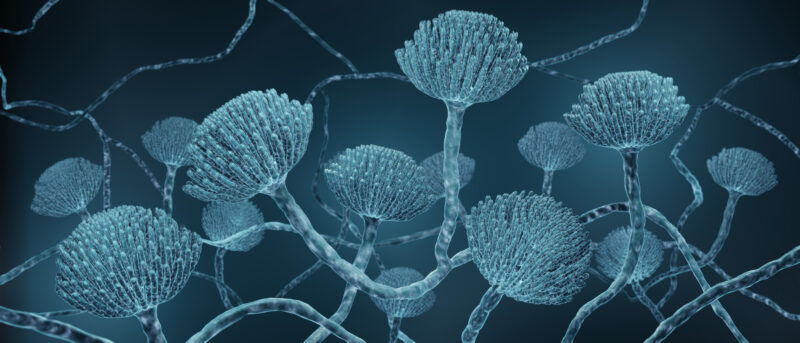The TP53 (p53) and mTOR (Mammalian Target of Rapamycin) signaling pathways are two important molecular pathways that regulate various biological processes within the cell and interact with each other. The intersection of these signaling pathways has a significant impact on cell senescence, cell proliferation, cell death and cancer development.
mTOR Pathway: Key to Cellular Growth and Proliferation
The Mammalian Target of Rapamycin (mTOR) pathway plays an important role in the regulation of cellular growth, proliferation and lifespan. The mTOR complex controls processes such as protein and lipid synthesis, autophagy (clearance of intracellular harmful substances), which are essential for cell proliferation. Furthermore, mTOR activity can change depending on cellular energy status and environmental factors. Normally thought of as a signal that promotes cell growth, mTOR can accelerate the aging phenotype of cells and predispose to cancer development in case of overactivation. Therefore, the mTOR pathway is a critical factor in understanding the complex link between aging and cancer.

TP53 and mTOR Relationship
These two signaling pathways regulate a common response to various stresses and environmental changes in the cell. In particular, TP53 can inhibit (block) the mTOR signaling pathway. When TP53 is activated, cell proliferation can stop and energy is conserved. This can be thought of as the cell’s survival strategy under stress conditions.
For example, the capacity of TP53 to inhibit mTOR determines its adaptation to stress conditions by reducing energy consumption in the cell. This interaction may help cells to survive stressful situations and potentially prevent cancer formation. However, this relationship can be very complex and can change depending on specific conditions. Cancer cells, in particular, can gain the advantage of uncontrolled proliferation by manipulating these signaling pathways.
Research in this area emphasizes that a comprehensive understanding of the TP53 and mTOR signaling pathways is critical for understanding both aging processes and cancer development, and for developing new therapeutic strategies.
Which one? Calorie Restriction, Intermittent Fasting and Rapamycin?
There have been many studies on the anti-aging potential of substances that inhibit mTOR, in terms of nutritional supplements or the timing of foods consumed during the day. There are many studies showing that calorie restriction (CR) and intermittent fasting (consuming food only at certain times of the day) trigger not only macro-scale cleansing and resting of the digestive system, but also autophagy, which is cellular cleansing. In this way, not only life span but also healthy life span is extended.
However, recent studies have revealed some interesting information that we did not expect. A study on mice showed that calorie restriction in old age provides little benefit and that intermittent fasting stops the mTOR pathway in young mice but not in old mice. In the same study, Rapamycin, a chemical that inhibits the mTOR pathway, was shown to be effective regardless of age. As a result of the experiment, Rapamycin, which prolongs life even if it is used temporarily, even if it is started at a late or early age, is actually already prescribed and used by doctors as a powerful antitumor and immunosuppressive substance.
It was first used in clinical settings to prevent rejection in organ transplantation and to treat certain types of cancer. However, many studies have shown that rapamycin is a very powerful agent in the prevention of aging and age-related diseases. A summary of the literature suggests that while caloric restriction may be more beneficial early in life, rapamycin may be highly effective later in life. In addition, given that the beneficial effects of rapamycin and CR are exerted through overlapping but different mechanisms, it can be said that they enhance each other’s effect and can be used in combination.
Reference:
Carter CS, Khamiss D, Matheny M, Toklu HZ, Kirichenko N, Strehler KY, Tümer N, Scarpace PJ, Morgan D. Rapamycin Versus Intermittent Feeding: Dissociable Effects on Physiological and Behavioral Outcomes When Initiated Early and Late in Life. J Gerontol A Biol Sci Med Sci. 2016; 71:866–75.
Sengupta S, Peterson TR, Laplante M, Oh S, Sabatini DM. mTORC1 controls fasting-induced ketogenesis and its modulation by ageing. Nature. 2010; 468:1100–04.
White Z, White RB, McMahon C, Grounds MD, Shavlakadze T. High mTORC1 signaling is maintained, while protein degradation pathways are perturbed in old murine skeletal muscles in the fasted state. Int J Biochem Cell Biol. 2016; 78:10–21.
Tang H, Shrager JB, Goldman D. Rapamycin protects aging muscle. Aging (Albany NY). 2019; 11:5868–70.
Joseph GA, Wang SX, Jacobs CE, Zhou W, Kimble GC, Tse HW, Eash JK, Shavlakadze T, Glass DJ. Partial inhibition of mTORC1 in aged rats counteracts the decline in muscle mass and reverses molecular signaling associated with sarcopenia. Mol Cell Biol. 2019; 39:e00141-19.
Tang H, Inoki K, Brooks SV, Okazawa H, Lee M, Wang J, Kim M, Kennedy CL, Macpherson PC, Ji X, Van Roekel S, Fraga DA, Wang K, et al. mTORC1 underlies age-related muscle fiber damage and loss by inducing www.aging-us.com 8067 AGING oxidative stress and catabolism. Aging Cell. 2019; 18:e12943.





